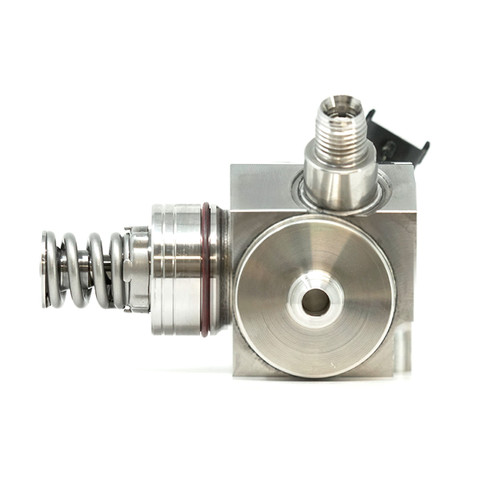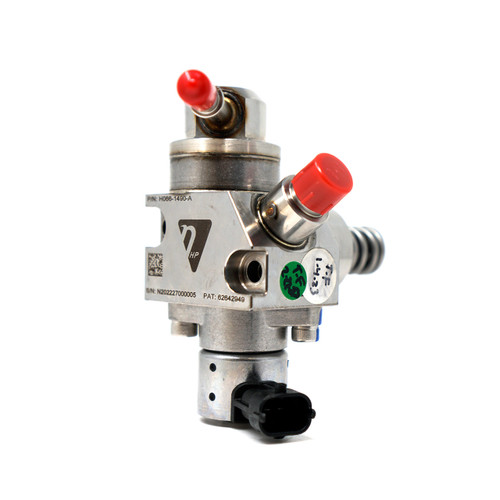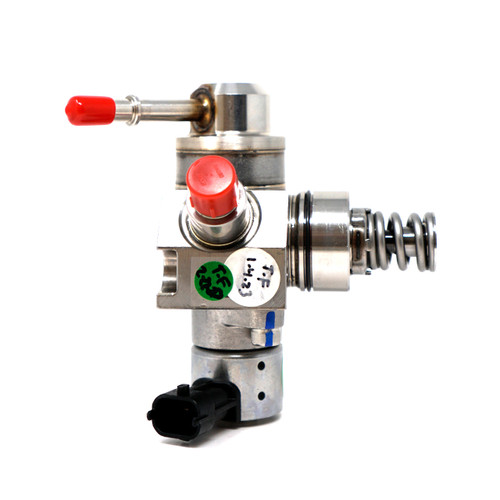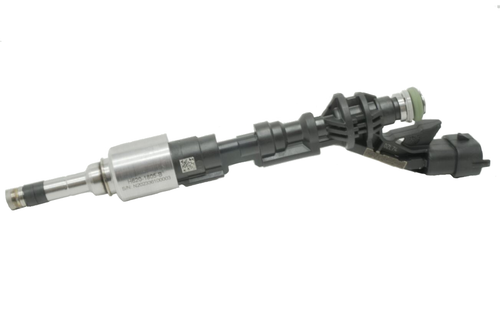What sets Nostrum apart:
- Fully Laser Welded HPFP Construction
- Custom High Pressure Fuel Line
- Direct Bolt on Kit
- 100% dynamically tested
- Limited lifetime warranty
- Uses Stock Low-Pressure Feed Line
It's time to party! Presenting the new Nostrum HPFP upgrade kit for the 1.6 Fiesta ST! Our kit is perfect for any Fiesta looking for more power.
Fully tunable with Cobb, you unlock the ability to make more low end torque and the ability to run full pump E85. Forget about blending at the pump or being constrained to a specific ethanol content!
Gain more injector headroom - add on a Nostrum upgraded fuel rail sensor! The factory fuel rail sensor is incapable of reading pressures beyond 20MPa, thus it is necessary to replace the factory sensor with the Nostrum Fuel Rail Pressure Sensor in order to take full advantage of the Nostrum Standard Bore Plus high pressure fuel pump, which is capable of operating at pressures up to 24MPa (240 Bar, or 3480 psi). Going from 200 to 240 Bar results in an additional 10% increase in injector flow!
Like all Nostrum products, the Fiesta HPFP kit is backed by a limited lifetime warranty, and includes detailed install instructions in the box. Tuning guides are available for your tuner or installer.
What comes in the box:
- High Pressure Fuel Pump (H066-1212)
- Accessories needed for installation are provided including – mounting flange, flange alignment tool, Mounting bolts- Flange and HPFP, LP line adapter, Fixture for bending the stock line
- Install Guide provided
Vehicle applications:
- (14-19) 1.6L EcoBoost Ford Fiesta ST
Recommended tuner:
Dyno graph sponsorship results:
Local Sponsor Fiesta made 199 WHP on pump E85 (~E75) with a Nostrum HPFP, "JLR" Injectors and other minor bolt ons! Not bad for a stock turbo 1.6!
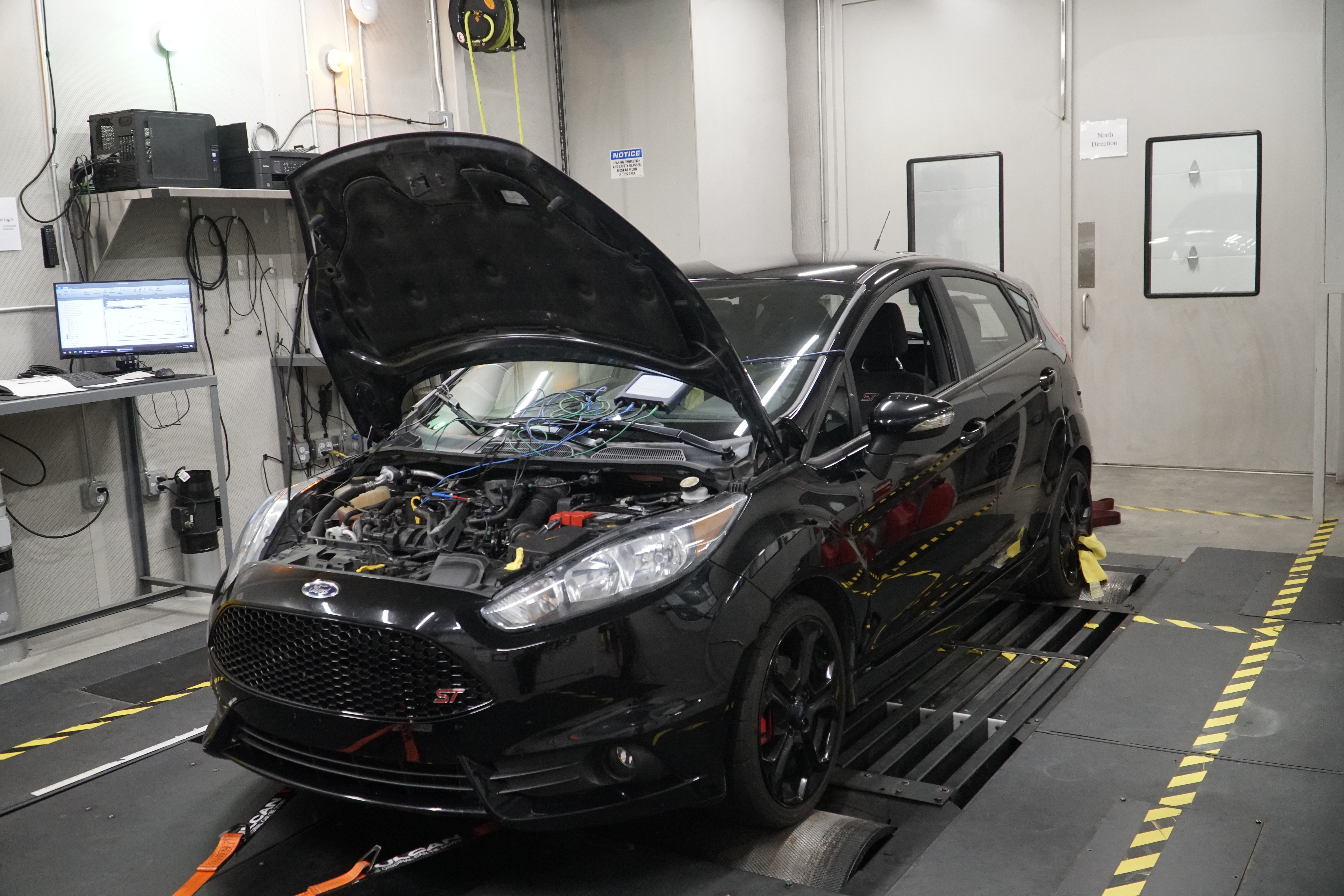

PHUL Performance was able to achieve over 400whp with the same fueling bundle, on a stock longblock 1.6!
*Horsepower and Torque numbers are approximate and can vary significantly depending on numerous factors including what supporting upgrades are done to the vehicle, ambient temperature, elevation, road surface, tire selection & condition, fuel octane and quality, vehicle weight, and more. The advertised numbers herein are based on optimal conditions and utilizing proper supporting modifications. Your results may vary.
Frequently asked questions:
Q: What is the benefit of a higher max operating pressure?
A: The higher operating pressure of the HPFP allows you to run the fuel injector at a higher pressure, sometimes higher than stock commanded pressure. This allows more injector flow (mass flow) by running the same injector at a higher pressure, say 240 bar rather than 200 bar. Increased pressure at the injector improves spray quality and penetration especially as boost pressure increases in highly boosted engines. So it's all about injector capacity and combustion quality (spray quality). Interestingly enough and contrary to popular belief, increasing HPFP operating pressure actually decreases volumetric efficiency.
Q: Why do your numbers say I will make less horsepower on E85 than 93 octane?
A: Great question! The numbers we list in the product descriptions are similar to the numbers a turbo charger lists for air flow. The numbers are the "fuel system capacity to generate power" regardless of the other engine system limitations (air handling, mechanical limitations, knock propensity). Essentially the numbers are calculated assuming "sufficiently large air flow", "sufficiently capable mechanical assemblies" and disregarding knock limits. The equation uses actual observed engine volumetric efficiency (when available from sponsorship vehicles) and fuel capacity (including target pressures) to calculate power. Gasoline has more energy per mass volume than E85. So the higher fuel flow capacity will mathematically generate higher power potential for a gasoline than a high ethanol content fuel. The other variables (air flow, spark, rotating assembly strength, charge cooling, mechanical assembly strength) are highly variable from build to build. This is why we state horsepower capacity for the fuel system – representing the potential of the fuel system if you have all the other aspects of your build addressed!






